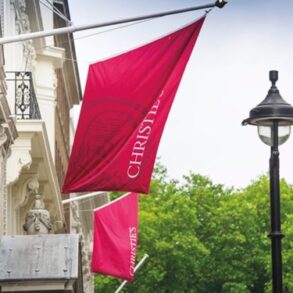Bank of America helps its clients sell their art, watches, and Birkin bags. It’s all part of a drive to be the one-stop shop for the art world.
ED JONES/AFP via Getty Images
- Already Wall Street’s biggest art lender, Bank of America wants to be the art world’s favorite bank.
- To cater to clients selling their masterpieces, BofA negotiates better deals with auction houses.
- BofA’s art finance head told BI how helping sell Rolexes and Monets fits into the bank’s grand plan.
Buying art is easy, according to Bank of America’s Drew Watson. Selling, on the other hand, is a different story.
Parting with a prized possession usually results from a major — and stressful — life event. Watson, head of the bank’s art finance group, calls them the five D’s: divorce, death, debt, downsizing, and deaccession, the last of which refers to museums removing a piece from its collection.
Most banks, including UBS and Morgan Stanley, refer clients to third-party consultants to broker deals with auction houses. But Bank of America negotiates on clients’ behalf to get better terms. The bank led a bake-off with multiple auction houses for the sale of a Henri Rousseau painting owned by a member of the famous art-collecting Whitney family. The bank secured a minimum sale price guarantee and negotiated how the house would market the painting. The painting, “Les Flamants,” set a record at Christie’s with a $43.5 million hammer price last May.
Bank of America is the biggest lender against art in the $34.1 billion business, according to Watson. He declined to specify its exact loan book but said it grows by $1 billion on average every year. Consignment advisory is a much smaller practice with about 20 to 25 transactions a year, but it’s ripe with potential, Watson said. Art and collectibles make up a meaningful chunk of assets for high-net-worth individuals, with one survey pegging it at nearly 9%. He believes it will also make a large portion of the $90 trillion in wealth transferring over the next two decades. Advising on selling these assets is part of Bank of America’s strategy to be the one-stop shop for the art world.
“Bank of America does want to be the place for all art-banking needs,” said Watson. “Broadly speaking, the purpose of consignment services is to more fully integrate art and collectibles into the bank’s wealth management offering beyond credit alone.”
How Bank of America can get better deals for rich collectors
The bank is able to land discounts and sweetheart deals as auction houses think of the firm as a deal aggregator, according to Watson, who joined Bank of America eight years ago from Christie’s. “If you were to walk in off the street with no preexisting relationship with the auction house, you don’t have a volume discount,” he said. “We are aggregating a lot of business and bringing it to them, and in exchange for that, we receive preferred selling terms that benefit our clients.”
When it comes to making decisions about their art collections, clients usually have time or expertise, but not both, according to Watson. For instance, a hedge fund mogul who is savvy about the art market is probably too busy to approach auction houses. An heir who has inherited art from their parents may not know much about their new possessions.
This is where Bank of America comes in. The client sets the agenda and is brought in for key decisions, but the art advisory group does all the legwork.
Courtesy of Bank of America
The bank typically approaches two to three auction houses, such as Christie’s, Sotheby’s, and Philips. Watson’s team hosts a presentation proposal day where the houses present their estimates and marketing strategies. The bank goes through a scorecard with the client, with factors including the estimates, sales strategy, team expertise, and financial terms. Price is just one factor.
“You can’t look at the auction estimate in isolation. You’ve got to look at it in the holistic context of the sales strategy and also the financial terms,” Watson explained.
It’s up to the client to pick the preferred bidder, and the bank goes back to the auction house to try to sweeten the offer.
These negotiations can save as much as 15% in fees between the typical 10% seller’s commission, sell-side fees for services like shipping and photography, and a success fee for exceeding the highest estimate. In addition to guarantees, the bank can push for an enhanced hammer deal where the auction house shares a portion of the buyer’s premium — a charge on top of the sale price — with the seller.
“We try to get them to sharpen their pencil while we still have leverage with the other houses,” Watson said. “At the end of the day, this is a very important feature of our program.”
The advisory work doesn’t end with inking the seller’s agreement. Watson’s team works with the auction house up to the day of sale, monitoring interest in the lot and setting the reserve price, or the minimum price a seller would accept. The bank can help clients decide whether to accept offers from buyers who want extended payment terms.
Consignment advisory can also lure new clients, as the service is only available to existing Merrill Lynch customers or the private bank. Watson’s team works with bankers and advisors to help would-be sellers become customers. The sale proceeds must be deposited with the bank, which collects a single-digit percentage fee. The exact percentage depends on the complexity and market value of the lot, he said. Transactions can vary wildly, especially since the bank also advises on consignments of collectibles, ranging from $1 million Birkin handbag collections to $100 million estates.
“Sometimes that liquidity stays at the bank, part of the client’s overall investment management relationship, or it can leave the next day,” he said. “It’s completely at the client’s discretion, but there is that kind of secondary business opportunity.”
This post was originally published on this site be sure to check out more of their content





